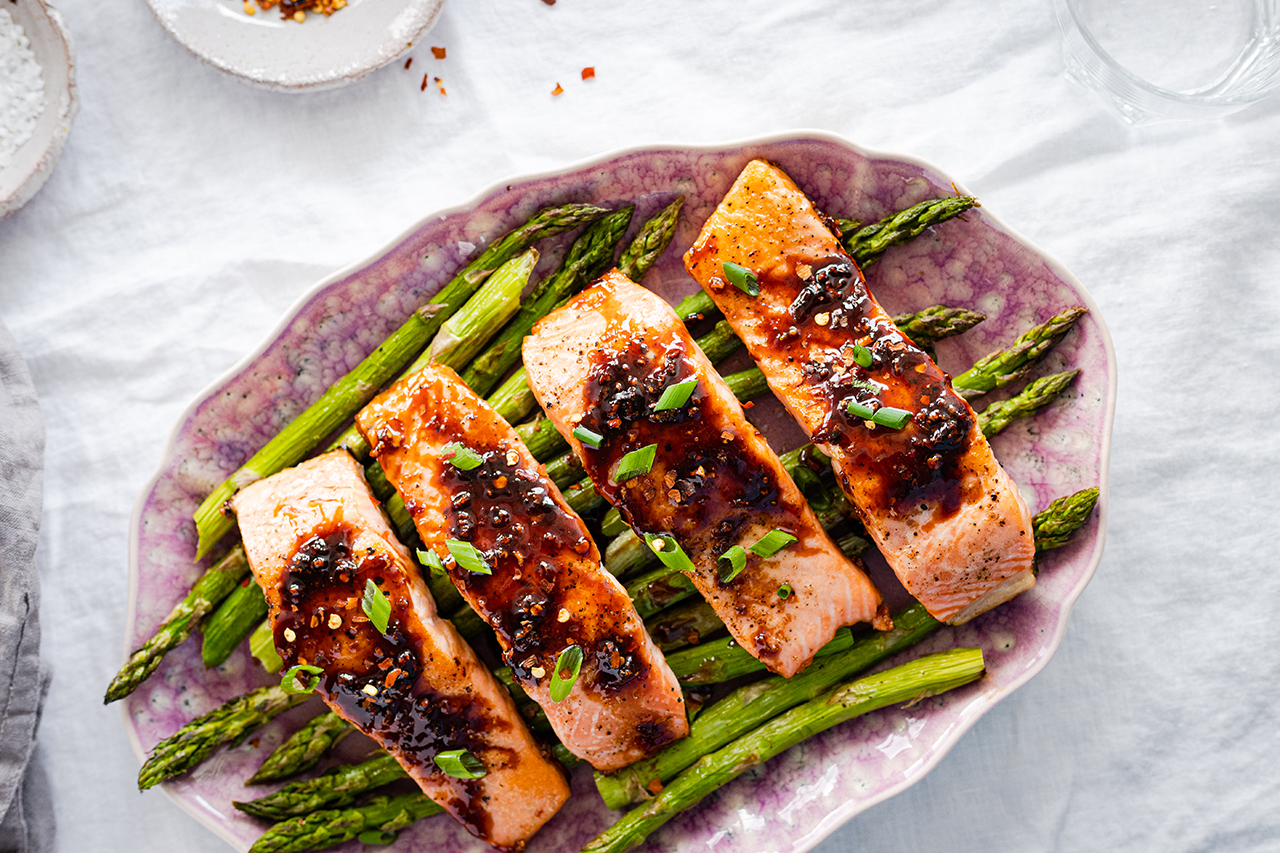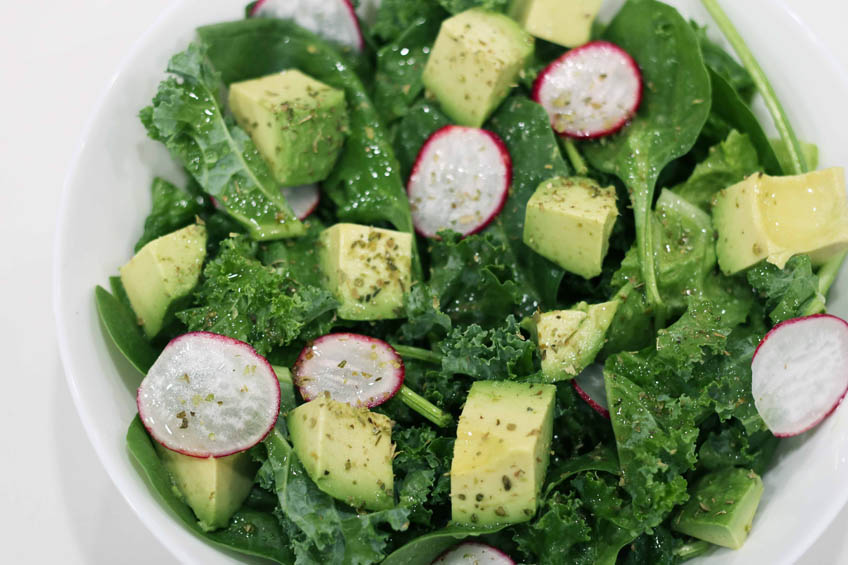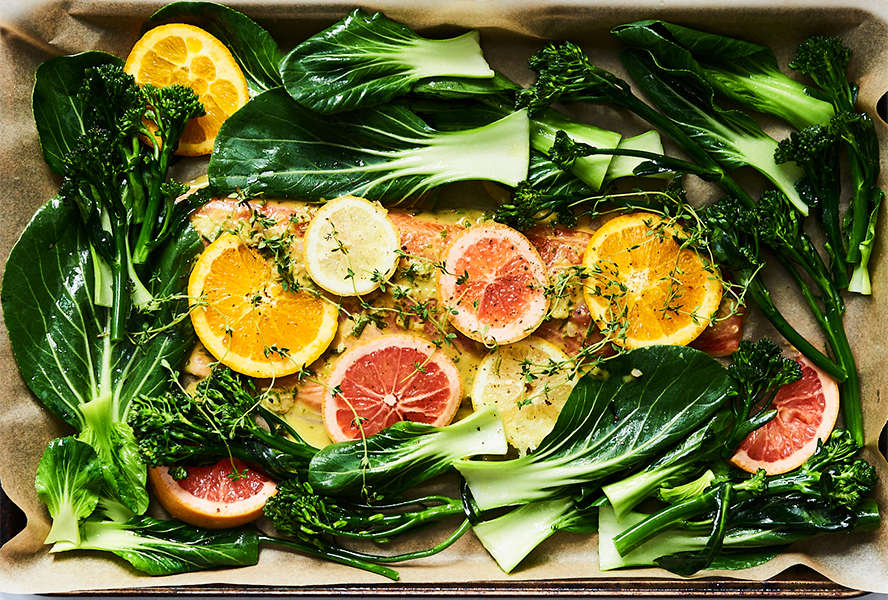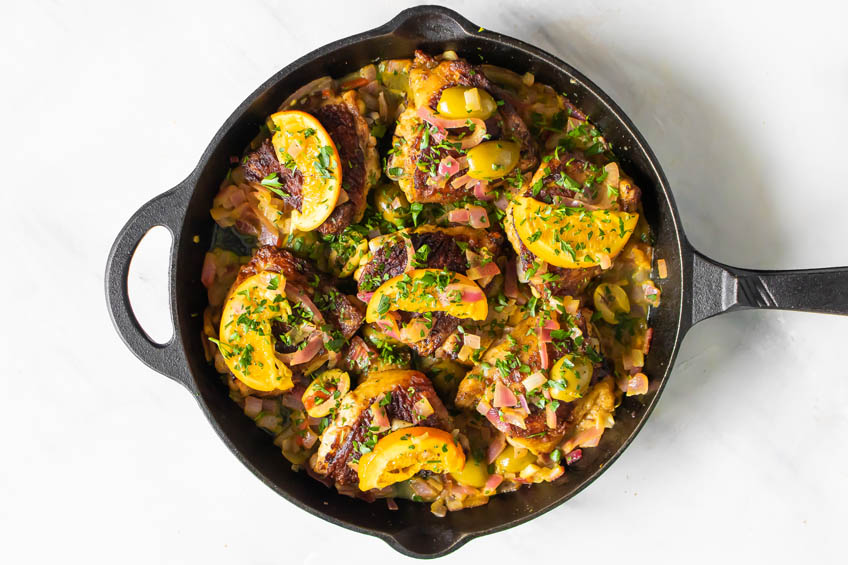
My grandpa, my mom, all of my mom’s siblings – they all have thyroid conditions. Blessed with my mom’s genes in so many ways (I’m forever grateful that I inherited her creative eye,) I knew it was only a matter of time until I experienced the wrath of some thyroid related autoimmune disease. In my case, it turned out to be Hashimoto’s disease, an autoimmune disease that affects the thyroid gland. For the past several years, I have dealt with the on and off symptoms of Hashimoto’s, and with my most recent flare up, it had me thinking – what role does my diet play into this? What adjustments do I need to make? And where do I even begin?
Why I tried AIP
With a mix of pandemic fatigue and not taking care of myself as well as I should have, I was finding myself constantly tired, unfocused at work (major brain fog), sluggish and uncomfortable. Being off of my autoimmune medication for a few years now and with a four month-long wait time to see a specialist – I decided to consult my naturopath, who suggested a three week Autoimmune Protocol (AIP) diet. This temporary diet reintroduces food to the body with the goal of healing and improving symptoms by eliminating foods that irritate the gut and cause inflammation. My main goal at the end of the three weeks was to alleviate my symptoms quickly without having to wait months before seeing a specialist.

A simple AIP-friendly salad I made often
AIP diet do’s and don’ts
This diet consists of meats and vegetables with many restrictions. Here’s a general breakdown of what you can and can’t have:
Foods to eat:
Foods to avoid:

Get the recipe: AIP-friendly Citrus Rainbow Trout (just skip the mustard!)
The pros
A newfound love for cabbage
I am a lover of all things carbs and dairy, so when I first started the diet I found cooking to be quite challenging. Over the course of three weeks I experimented with many substitutes to replace the delicious bowl of hot rice or fresh pasta I was so used to having with my meals. Most of my meals consisted of salads, cauliflower rice, heaps of roasted vegetables and baked sweet potatoes (which are the easiest things to make!). But my most favourite ingredient to cook with (besides garlic) was cabbage.
The best thing about cabbage was that it was inexpensive and so versatile. I diced cabbage to add into my stir-fry, shredded it for salads, steamed it, made cabbage steaks as well as Chinese Szechuan grilled cabbage skewers. You name it – I cooked it!
Trying new things
When I first began this diet the sugar cravings were intense, but eventually subsided over time. Being on this diet forced me to think out of the box and try new things to satisfy my sweet tooth. Don’t underestimate the power of dried fruit – they were a real lifesaver for me!

Smoothie bowls were a go-to AIP-friendly breakfast that I made daily
Dining out
Going on the AIP diet, I was concerned I’d have to cook every single meal for three weeks, but thankfully that wasn’t the case! Although you may be restricted to menu items or have to make special requests for your orders, eating out is definitely possible. I found Asian cuisine restaurants worked the best for this diet. I ended up eating at all-you-can-eat Japanese and Korean BBQ restaurants more times in these three weeks than I have in the last few years. Unlimited amounts of seafood, sashimi, meat and vegetables are all on the AIP-approved list. Yes, please!
The cons
Meal prepping and grocery shopping
Shopping was the most difficult part of going AIP. I just never had enough groceries to last me until the next shop! Even having done a Costco meat haul and small trips to local shops, the amount was never enough because I required much larger portions of meat and veggies to replace the belly filling carbs I used to have. My solution: about mid-diet I began making rice and pasta for my partner’s meals to help reduce my trips to the grocery store.
It’s a pricy diet
This diet is downright expensive. My naturopath recommended organic foods and to have all my meat lean – but with a mortgage, inflation and rising costs of living – I couldn’t do that. I tried my best to budget and bought as many items as I could on sale. Over a course of three weeks I spent approximately $400 on groceries for my partner and I (excluding my meals dining out). I am quite the couponer and sale addict, so compared to our average $50-$60 grocery shops each week, the cost of this new diet was a big adjustment.

Get the recipe: AIP-friendly Healthy Moroccan Olive and Orange Chicken
The results
The longer I stuck with the diet, the more I noticed positive changes to my body. I was no longer waking up tired and I was able to concentrate a lot better during the day. The biggest difference I noticed was bloating. Pre-diet, my belly would get bigger the longer the day went on. That feeling of my abdomen being hard or swollen after eating was no longer an issue.
For me, the AIP diet was a great way to reset my body and make immediate changes. The greatest takeaway from this experience was learning how to make healthier substitutions like replacing my rice and pasta with sweet potatoes, salads, soups or mountains of stir-fried veggies. Although this diet is not something I see myself continuing long-term given the price and commitment it requires, it’s comforting to know that I can turn to it the next time I have a major flare up.
As with all diets, be sure to check with your doctor to make sure this is beneficial for you.
